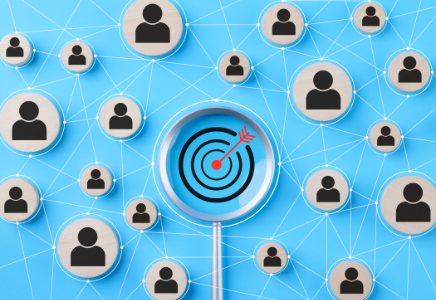
Businesses are continuously searching for more effective ways to connect with their target audience. Traditional demographic data—such as age, gender, income, and location—are helpful but often fall short of providing a full picture of consumer behavior. This is where psychographics come into play, offering a deeper, more nuanced view of your audience that can significantly enhance your marketing efforts.
What Are Psychographics?
Psychographics examines consumer values, attitudes, interests, and lifestyles. Psychographics explain your customers’ decisions, unlike demographics. Businesses can understand client motives and purchase behavior by examining psychological traits.
Both consumers may be 30-year-old men in urban regions with similar incomes. One may be passionate about sustainability and health, while the other prefers convenience and technology. Psychographics can help you adapt your messaging to each consumer better than demographics.
Key Elements of Psychographics:
- Values – What does your target audience believe in? These can range from environmental consciousness to family values.
- Personality – Introverts and extroverts may respond to different marketing strategies.
- Lifestyles – Understanding daily routines, hobbies, and preferred activities helps shape the way you approach potential customers.
- Interests – What are their passions? Knowing what excites your audience can guide product development or marketing angles.
- Opinions and Beliefs – This includes political views, religious beliefs, or even brand preferences, which can influence purchasing behavior.
How You Can Use Psychographics
Now that we know what psychographics are, the question becomes: How can this information be used to enhance customer targeting? Here are some key ways:
- Personalized Marketing Campaigns: By understanding the psychological makeup of your customers, you can create personalized marketing campaigns that appeal to their core values and desires. This leads to a higher engagement rate, as consumers are more likely to respond to messaging that aligns with their beliefs and interests. For instance, if your target audience values sustainability, your advertising can highlight eco-friendly practices or products.
- Product Development: Psychographic data allows companies to innovate by understanding consumer needs on a deeper level. If your customers are highly focused on wellness, you might create health-conscious products or promote features that align with a healthier lifestyle. Understanding their lifestyle and preferences informs your product or service design, ensuring it meets their needs.
- Customer Segmentation: Psychographics help refine customer segmentation, allowing you to create more distinct and actionable groups. Instead of lumping customers together based on age or income, you can segment them based on their attitudes and behaviors. For instance, two groups with similar demographics might be categorized as “early adopters” or “skeptics” based on their psychographic profiles, leading to more targeted and effective marketing efforts.
- Improved Customer Retention: Customers are more likely to stay loyal to brands that resonate with their personal values. By using psychographic insights to tailor your interactions and offerings, you foster a stronger emotional connection with your audience, encouraging repeat business and long-term loyalty.
How to Collect Psychographic Data
- Surveys and Questionnaires – Direct feedback through surveys can provide valuable insights into customer interests, preferences, and values.
- Social Media Analysis – Examining customer behavior and interactions on social media can help you identify patterns related to their interests, lifestyles, and attitudes.
- Customer Feedback – Reviews, testimonials, and customer service interactions can reveal psychographic data based on customer experiences and perceptions.
- Web Analytics – Analyzing what types of content, products, or blog posts users engage with can help you understand their psychological profile.
- Focus Groups – Conducting in-depth discussions with groups of your customers can yield valuable qualitative insights into their behaviors and attitudes.
Psychographic data helps you understand customer motivations. Psychographic data lets you target customers beyond demographics and build individualized, emotionally engaging marketing campaigns. This method improves audience engagement, client loyalty, and corporate success. In today’s competitive market, psychologically understanding your customer is crucial to sticking out and adding value.
See how a Modern Observer Group coach can help you understand your customers. Schedule a call here or contact us at the information below. Modern Observer Group programs are based on the Businetiks system as detailed in the book, “The Businetiks Way.”

